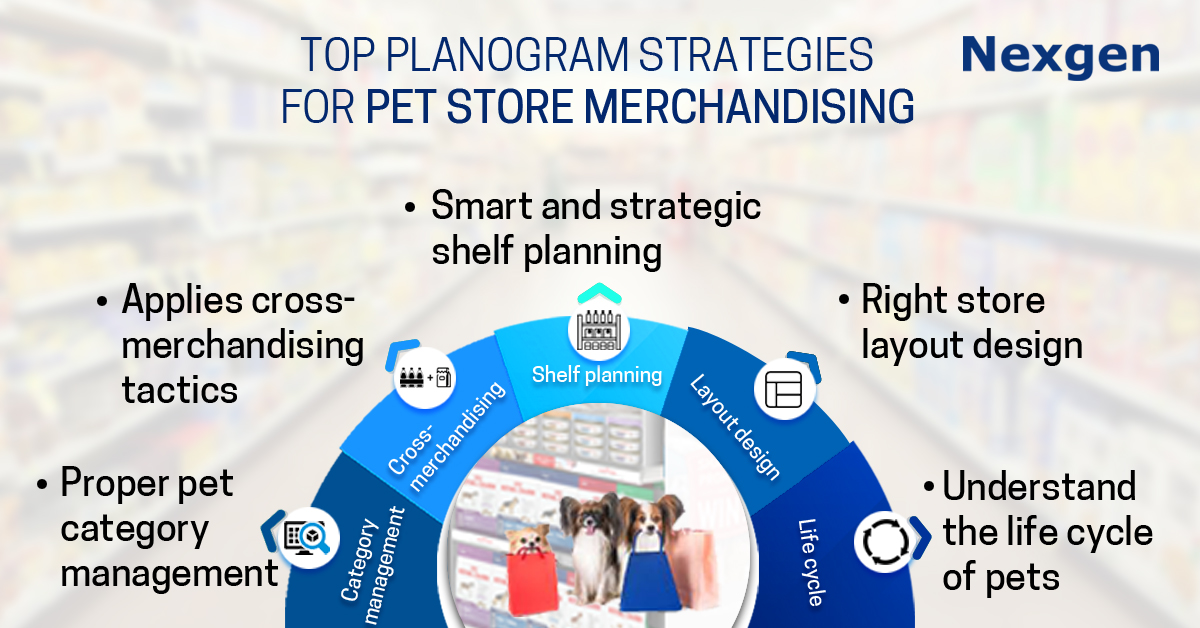When it comes to merchandising a pet store, it can be complicated if the merchandiser does not put in extra care for the in-store pet category. Research shows that one-third of U.S. households visit pet stores for buying pet necessities on daily basis. People with a genuine love for their animals always include pet necessities like pet food, toys, leashes and carriers in their monthly budget. It will be more in the upcoming years, as the emotional attachment of a customer towards their pet is grossing day-after-day.
In the U.S., many of the households treat their pets like family members. For example, they celebrate their pet’s birthday and go on weekly outings. Due to this pampering, retailers across the board invest highly in pet store merchandising to drive customers. Just like in retail merchandising, pet store merchandisers are also attentive to changing lifestyles and customer trends to visually attract their customers. Therefore, a pet store needs to be designed with the right store layout design, product assortment and proper shelf execution. Therefore, pet store merchandising can be done better with the help of planogram software. A planogram is a visual merchandising tool, that aids merchandisers to properly execute their pet store shelves with the right assortment optimization. Unlike other retailers, pet stores do not have a large retail space for merchandising products. Therefore, merchandisers should be smart and strategic when it comes to planning in-store shelves. For instance, a large bag of cat food requires a gondola with a larger base shelf. So, the following are the top planogram strategies for pet store merchandising:

- Right Store layout design: Purchasing heavy bags of pet food is termed as the primary reason for customers to shop in a pet store. Therefore, placing such food bags on a wide-span shelf would be great to improve sales. Also, add-on items such as toys, bells, brushes, pet carriers, double feeders and other pet accessories can entice customer interest to visit a pet store.
- Understand the lifecycle of pets: A merchandiser should understand the lifecycle of pets for proper merchandising. This will help them in assisting their first-time customers for choosing the right products for their pets. A lifecycle refers to the stages of a living organism lives throughout its lifespan. For example, The lifecycle for fish is egg, larva, pupa and adult. Thus, for fish, all the products will be merchandised with different packages, brands and sizes are according to their lifecycle.
- Categorize animal categories: There is a need to categorize different animal categories to not confuse customers. Today’s five vertebrates include mammals, birds, fish, amphibians and reptiles should be subdivided into categories, sub-category, segment and sub-segment can allocate the shelf space and shelf sharing rightly. Store shelves can be well executed with the help of planogram by allocating maximum shelf space for each animal category. Also, a merchandiser can use different categories for pet store merchandising. For instance, a merchandiser should arrange cat and dog categories separately, even though they follow similar lifecycle of kittens or puppies, adolescents or seniors.
- Apply cross-merchandising tactics: Cross-merchandising helps merchandisers to combine products of different categories together. This will help retailers to drive sales into their stores. For example, a merchandiser can add cute toys, bells and belts with puppy food on shelves. This cross-merchandising tactic can help increase the basket size of customers.
Overview of Nexgen POG
Nexgen POG is a robust cloud-based visual merchandising tool designed for quick and easy planogramming. It helps to merchandise a pet store with the right store layout design, proper shelf placement of products and right assortment optimization. It is a multi-device compatible software that helps retailers to create store-specific retail displays to boost in-store sales and increase revenue. Nexgen POG ensures right product placement, proper category management and compliance analysis for improving retail store performance.